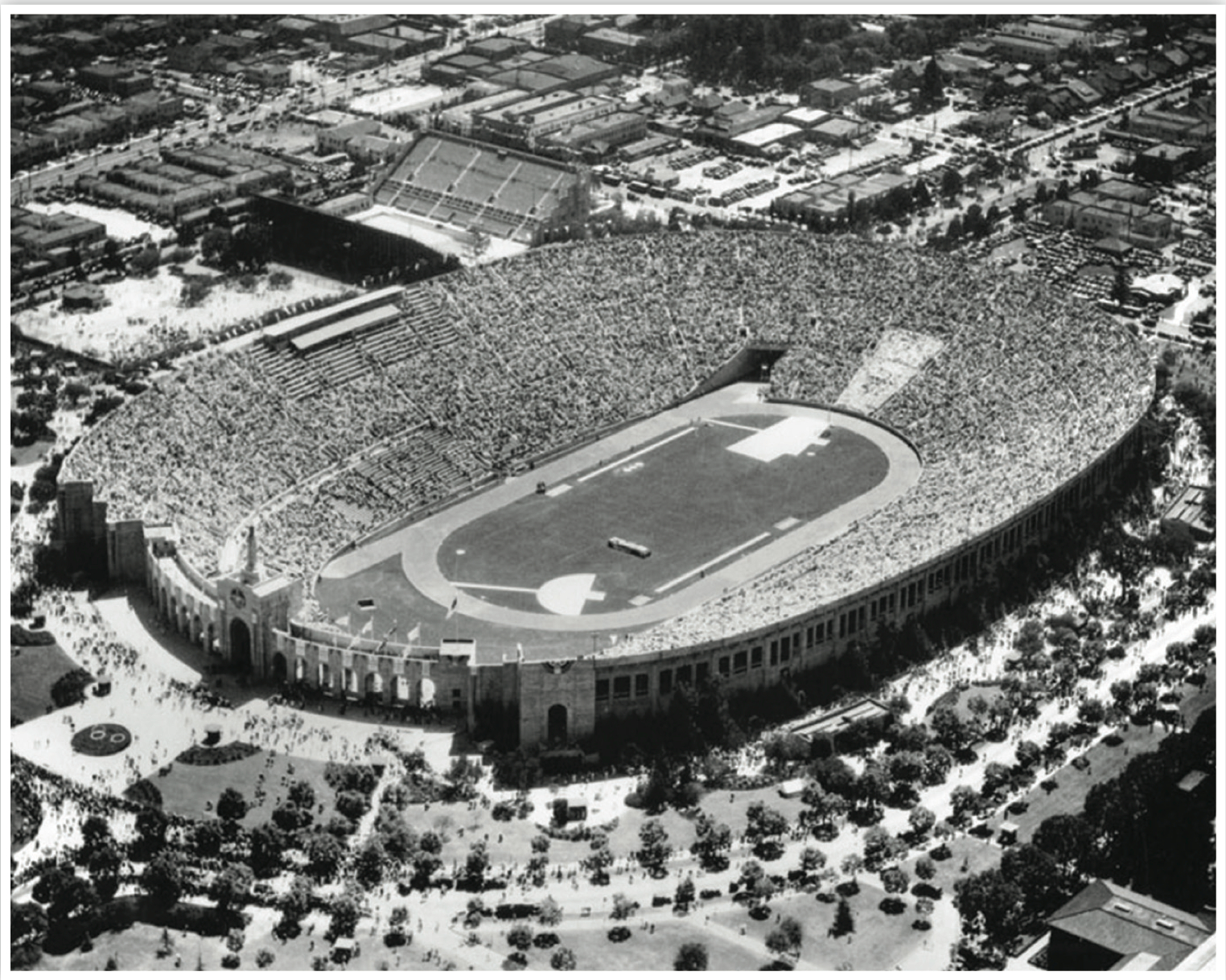When Los Angeles won the bid to host the 1932 Summer Olympics, it was still a partially rural location trying to transform into a metropolis, and was considered distant geographically and culturally in the minds of Americans and the world - it's only claim to fame was its connection to Hollywood. The U.S. Highway 66 Association, established in 1927 to promote travel on the highway, saw the LA Olympics as a way to draw attention to a specific site along the route, while emphasizing the Mother Road’s ability to bring people to such a desirable location. The Association placed its first advertisement in the July 16, 1932, issue of the Saturday Evening Post, inviting Americans to travel the “Great Diagonal Highway” to the Summer Olympics in Los Angeles. The ad worked: within a week, the Association’s office in Tulsa, Oklahoma, was overwhelmed with hundreds of requests for information about Route 66 and the LA Olympics.
Advertising was key in drawing people to an event during the Depression. The LA Olympics Committee failed to sell many spectator tickets, until several Hollywood celebrities volunteered their time to promote the Games, including Douglas Fairbanks, Charlie Chaplin, Marlene Dietrich, and Mary Pickford. The 1932 Olympics, referred to as the Games of the X Olympiad, pioneered the modern template for Olympic mega-productions, and over 100,000 spectators paid $3 each to attend the opening ceremonies at the Memorial Coliseum (known then as the Olympic Stadium).
The Coliseum is a great detour while driving Route 66 in Los Angeles; it was commissioned in 1921 as a memorial for LA veterans of WWI, and was expanded in 1932 for the Olympics. Today, you can see the Olympic cauldron torch, the Olympic rings, a pair of life-sized bronze nude statues of male and female athletes added for the 1984 Olympics, and the “Court of Honor” plaques which recognize events and people from the Coliseum’s history, including the gold medalists from the 1932 and 1984 Olympics.
The 1932 LA Olympics is also significant for introducing many elements that would become standard for the Games. An Olympic Village was built for the first time to house the male athletes at $2 a day - they couldn’t afford to stay anywhere else (female athletes were housed at the Chapman Park Hotel). The 1932 Olympics also introduced the first photo-finish cameras and the first victory podiums used for awarding medals. The tradition of having an Olympic mascot was also created, albeit unconsciously, when a Scottish Terrier wandered into the Olympic Village and was adopted by the athletes as their unofficial mascot, “Smokey.”
Although the global repercussions of the Depression affected the Games - only 1,332 athletes from 37 nations could afford to participate - the 1932 Los Angeles Olympics were considered a success, and even managed to be profitable. No small part in thanks to Route 66 and the Association that saw the Mother Road as an opportunity to unite Americans on a large scale in order to cheer on our best: the United States won the most medals at the Games, winning 103 out of 346 medals. The tradition will continue in 2028 when Los Angeles hosts the Summer Olympics for the third time, and Route 66 will still be there to transport fans to the greatest of world games.
